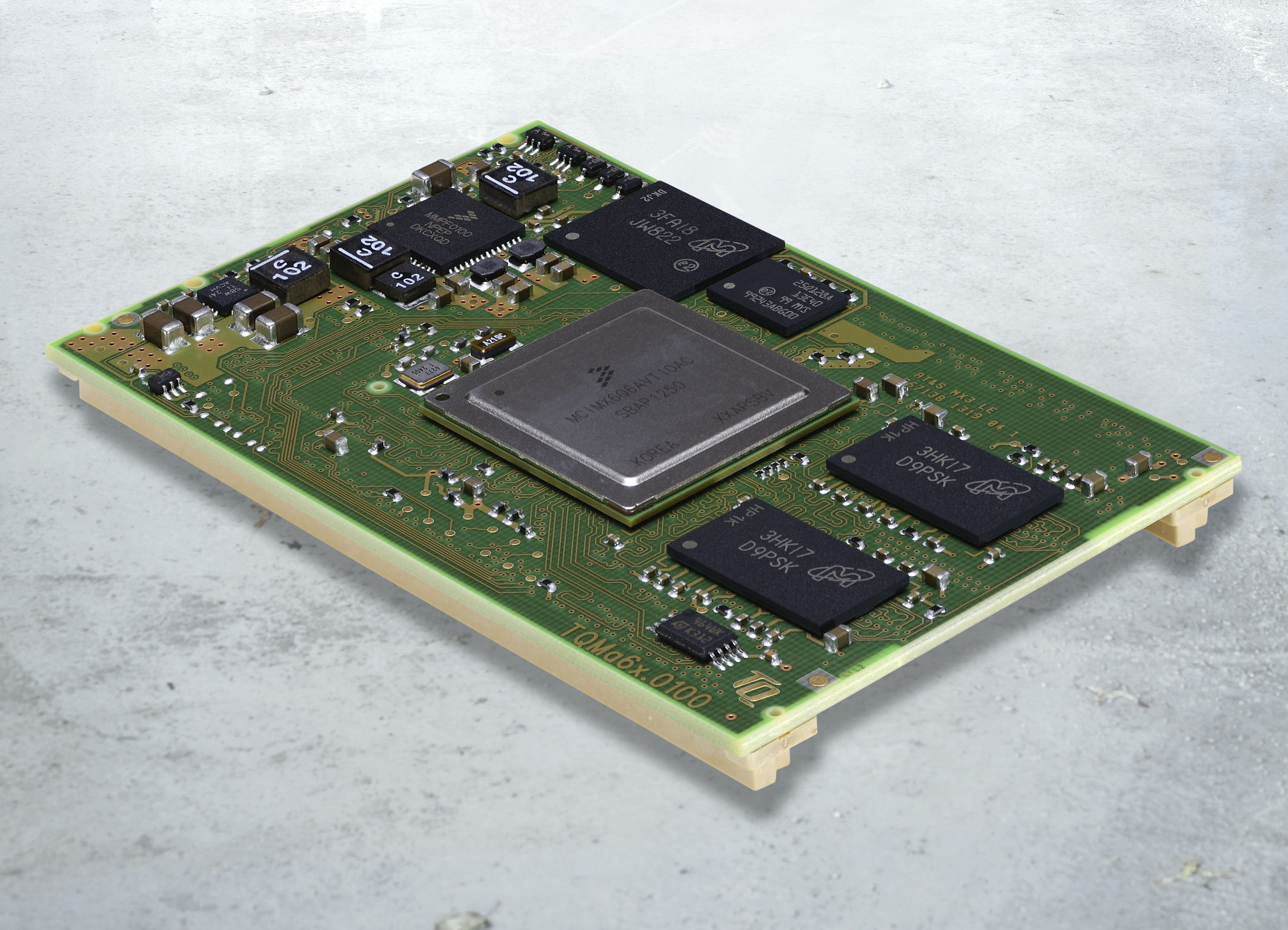Next-gen modules offer high graphic performance
At embedded world 2017, TQ presented its module concepts based on the i.MX8 series of CPUs. The i.MX8 CPUs, based on three different Cortex Axx architectures with differing market orientations, already show the promise of trend-setting solutions. The individual CPU versions have differing specifications and support CAN FD, USB 3.0 and audio. In addition, they exhibit high graphical performance (4K video, 3D graphics).
Depending on the requirements, the customer can select the appropriate CPU derivative: In all, TQ presented three new module concepts based on the i.MX8 CPU derivatives.
The planned modules are based on the three CPU families of the i.MX8 series and differ significantly in core technology and functionality. They lay the foundation of the new generation of modules. Using leading technologies in the fields of graphics, communication and security, in combination with the energy-saving core architectures of Cortex A35, Cortex A53 and Cortex A72, up to three scalable, multi-core module platforms are available to customers.
With these new CPU families, NXP has succeeded in providing a balanced combination of CPU performance, interfaces and performance features for an appealing module design. Due to the interface variety and compact size, as well as low power consumption, the new ARM modules from TQ will become a suitable basis for applications in the fields of man-machine interfaces, industrial control systems and Internet of Things (IoT) gateways. Furthermore, a diversity of additional application options is conceivable for these embedded modules.

For the system developer, two of the planned embedded modules are adapted in a way that an optimum of interfaces can be used directly to the module. In at least one module, the SMARC 2.0 standard is to be used. This means that the SMARC module can be applied as a platform concept across departments and companies can therefore reuse the know-how that has already been acquired. In many projects this not only saves valuable time, but also reduces costs during the development process.
With these designs, TQ has supplemented its product range through the addition of a new CPU architecture based on ARM Cortex-Ax. In the case of these products, all customers and potential customers of TQ will also be supported by the usual high level of reliability and quality of design.










